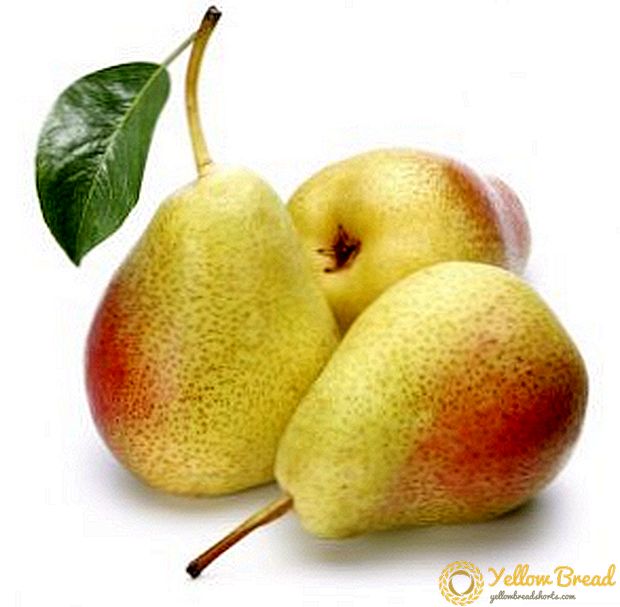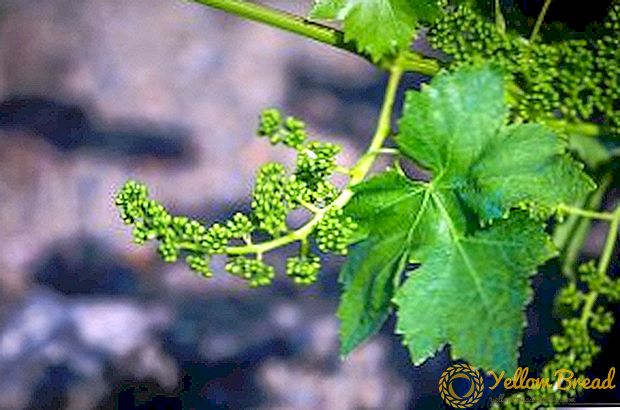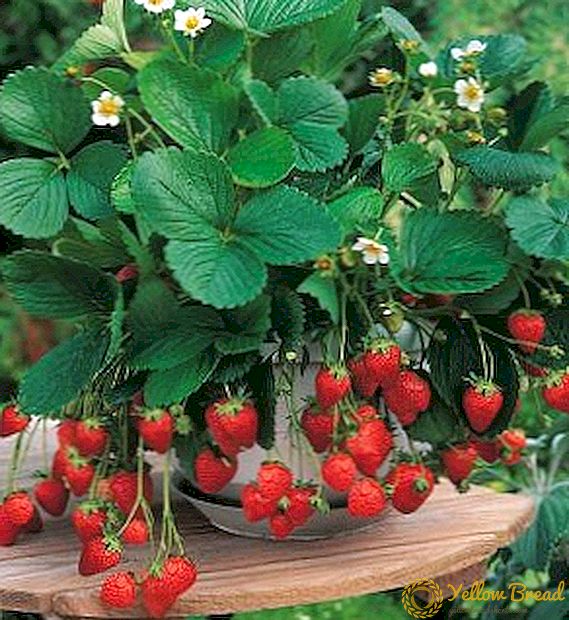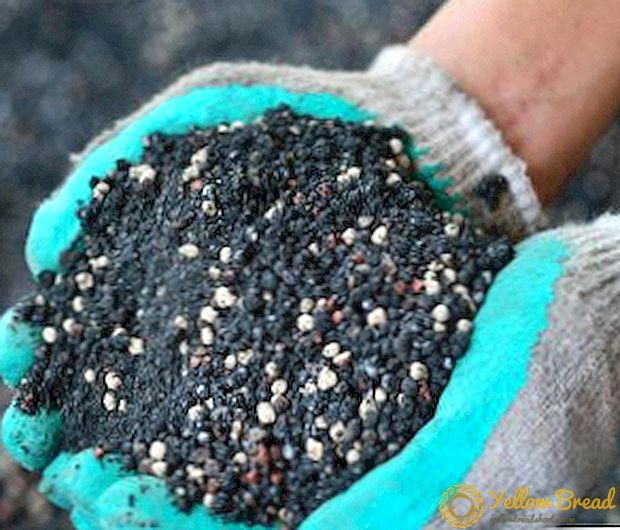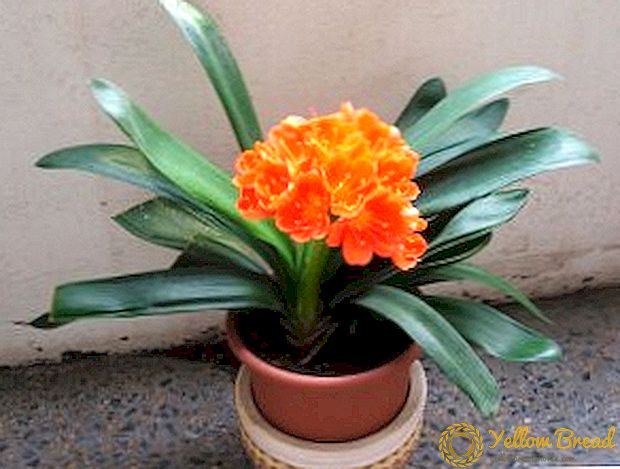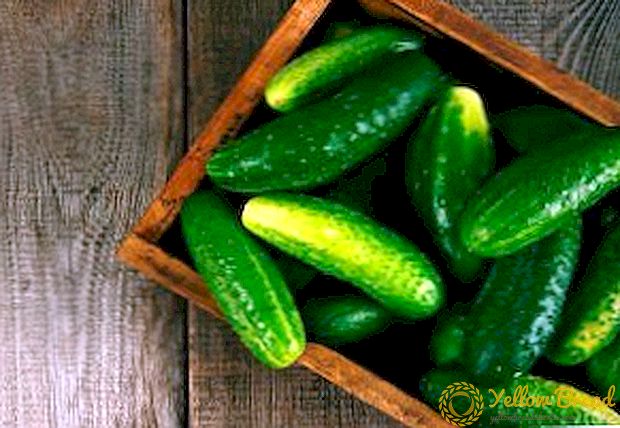 Cucumbers are loved by many, and in any form: fresh, salted, pickled - they are necessarily present in the human diet. The problem is which of the varieties to choose in order to satisfy the needs of one and all.
Cucumbers are loved by many, and in any form: fresh, salted, pickled - they are necessarily present in the human diet. The problem is which of the varieties to choose in order to satisfy the needs of one and all.
Some find a solution in the cultivation of several varieties and obviously receive certain bonuses from it. But we will talk about the universal variety. "Phoenix plus", which, in addition to taste, has among its advantages high adaptability and resistance to diseases.
- Description and photo
- Bushes
- Fruit
- Characteristic
- Advantages and disadvantages
- Features of growing
- Location and lighting
- Soil requirements
- Reproduction and planting
- Direct seeding
- Rassadny way
- Grade Care
- Watering and soil care
- Fertilizer
- Garter and bush formation
- Harvest
Description and photo
Sort "Phoenix plus" - This is an improved version of the Phoenix 640 cucumber variety (or simply Phoenix), but they should not be confused, because despite the genetic relationship, in their description, the varieties have a number of different properties that are important to the gardener: ripening time, taste , fruit size and yield.  This variety is resistant to powdery mildew and cucumber mosaic virus from the city of Krymsk in the Krasnodar Territory. The prototype - "Phoenix 640" ("Phoenix") - was bred by the breeder and scientist A. V. Medvedev, in the 80s of the last century, and its improved version - by the same scientist in 1993.
This variety is resistant to powdery mildew and cucumber mosaic virus from the city of Krymsk in the Krasnodar Territory. The prototype - "Phoenix 640" ("Phoenix") - was bred by the breeder and scientist A. V. Medvedev, in the 80s of the last century, and its improved version - by the same scientist in 1993.
Bushes
The shrub of this variety is a mid-growth vine about 2.5 m in length with moderately frequent lateral shoots. It is interesting to pay attention to the morphology of the bush, which itself is the prevention of many diseases:
- side shoots are located at a sufficient distance from each other, do not intertwine and do not thicken the bush, which contributes to good air circulation and prevents the development of fungi;
- the small size of the sheets prevents the strong evaporation of moisture into the atmosphere, so that valuable liquid goes in favor of the fruit;
- the liana is very tenacious and unpretentious: it feels equally good on the trellis, single support and in case of creeping cultivation.
On the shoots of "Phoenix plus" more female flowers than male ones are formed, which, naturally, increases the harvest. 
Fruit
"Phoenix Plus" refers to salad varieties, but it is suitable for pickling, according to hostesses, it remains crisp and elastic, but for salting it is better to choose a variety with denser flesh.
This variety has a large percentage of "commercial yield" - 85%, the fruits are not susceptible to deformation during the period of growth, which makes them a good commercial variety. At the time of the first maturity the cucumber reaches 10-12 cm in length, has a rich green color with barely noticeable longitudinal stripes. The surface is moderately hilly, each tubercle ends with a white spike. In the context of the fruit is triangular; the skin is dense, crispy; the flesh is quite elastic, juicy and fragrant.
On average, the harvest from one bush for the entire period of fruiting is 6-7 kg. From one hectare "Phoenix plus" give 610-615 centners.If we talk about how much was recorded as much as possible, then this is 625 centners per hectare, the harvest was gathered in the Krasnodar Territory. 
Characteristic
The name in honor of the bird, rising from its own ashes, correctly suggests the idea of endurance of the variety and its resistance to fungal and viral diseases. "Phoenix Plus" is a middle-ripening variety, begins to bear fruit 42-45 days after mass sprouting, fruits are harvested daily, the maximum interval between harvest is 3 days. The variety is unpretentious in care, tolerates temperature fluctuations and lack of moisture, does not respond to such stresses by the appearance of bitterness. The variety is zoned in temperate latitudes and, due to its high adaptive capacity, produces good yields in both the southern regions and the northeast, such as Siberia.
Advantages and disadvantages
"Phoenix Plus" - free from flaws! A bold statement, but this variation of the variety "Phoenix 640" was created in order to get rid of some of the unpleasant features of the parent source, namely:
- the appearance of bitterness with temperature drops;
- too powerful development of green mass, which led to the thickening of the bush and hindered the development of fruits;
- too large fruit size - 15-17 cm, weight - 120-160 g, which made Zelentsy exclusively salad option, not suitable for preservation.

Younger, improved "Phoenix Plus" boasts:
- versatility - small, crunchy, fragrant fruits are suitable for pickling, salting and fresh consumption;
- the variety is not genetically prone to bitterness;
- have good keeping quality, are transportable and can be stored for up to 15 days;
- undemanding, well tolerate heat and cold;
- immune to pathogens of fungal and viral diseases.
Features of growing
If growing cucumbers for you is not the first time, then choosing "Phoenix plus", you will not encounter any difficulties, quite the contrary, the variety may please with ease of care. 
Location and lighting
A place for planting cucumbers must meet the five simple requirements:
- Have fertile soil;
- Observe crop rotation: good predecessors for cucumbers - potatoes, tomatoes, legumes;
- To be at some distance from crops related to cucumber (melon, zucchini);
- Should not be used every year for planting cucumbers or related crops;
- Around-the-clock access of light is desirable, but if there is no such possibility, then lighting is preferable in the morning. To this end, cucumbers are planted on the south side of a neighboring culture or other barrier blocking the light.
Soil requirements
Best of all, cucumbers grow on chernozem, loamy and sod soils. The soil should be light, but nutritious, so that would not detain moisture. Groundwater should not be planted at the landing site. Ph - neutral, undesirable salinity area or increased acidification. 
Reproduction and planting
Breed "Phoenix plus", like all cucumbers, seeds. There is an interesting tendency in cucumber seeds, which is not characteristic of other types of crops: their germination rate increases with time, reaching a limit of 3-4 years, then gradually decreases. The shelf life of seeds is usually about 8-9 years.
Cucumbers of this variety can be planted either by seedling, or sown directly into the ground. Let's take a closer look at each of the methods.
Direct seeding
This method has its advantages, one of the main arguments in favor of direct sowing is the fact that cucumbers do not like picks and take root heavily in a new place. So, it is necessary to sow seeds on May 15-20, better - later. Before sowing, they carry out standard preparation of the cucumber plot:
- Dig up and loosen the soil (fertilizer is brought in from the fall);
- Substances that improve breathability are introduced into the soil, if necessary (sand, for example);
- Watered.
After preparation, furrows with a depth of 3-5 cm are made on the site - here we will sow the seeds. As already mentioned, cucumber seeds have a high germination rate, so do not sow them too thick: 15-20 cm between the seeds will be perfect.After sowing, the seeds are covered with an upper layer of earth and lightly tamped with fingers to increase contact with the soil. 
Before the emergence of seedlings, crops are covered with a film in order to reduce the evaporation of moisture and protect against possible temperature drops. An air cushion of 6-10 cm should remain between the film and the soil. It is very simple to care for such a greenhouse, it is enough to periodically ventilate it on sunny days and moisturize as it dries.
Rassadny way
If you have ever grown any seedlings - growing cucumbers will seem trivial to you, since these guys do not need such strict observance of temperature and light conditions, such as tomatoes. The only condition is to plant the seeds immediately in separate containers, so that in the future you do not have to dive off the plants and you can plant the seedling in the ground directly from a handful of earth without hurting the root system.
Mix for planting cucumbers:
- 30% peat;
- 20% turf land;
- 40% compost;
- 10% sand.

The second option:
- 50% mullein;
- 20% turf land;
- 30% peat.
Remember that the specified composition of the mixture for cultivation is ideal, and it will be good if you can follow the recommendations, but if not, just make sure that the soil is fertile and light.
Seedlings are planted in early May, and young plants of 3-4 weeks old are transferred to the soil, that is, they are planted in open ground in early June. Before planting, the seeds are soaked for half an hour-hour in a barely pink solution of potassium permanganate for disinfection, then it is possible to carry out treatment with growth-stimulating drugs, such as Ecogel, Epin-extra, Novosil or Zircon. Means not only stimulate the growth of seedlings, but have immunomodulatory effects, increase plant resistance to harmful factors.  To harden the seeds and increase their resistance to cold, you can carry out the following procedure: wrap the seeds in a damp cloth and leave in the refrigerator at a temperature of + 2-3 ° C for 2 days. At the same time, care must be taken to keep matter moist. After extraction, immerse the seeds in warm (35-40 ° C) water for about an hour, then plant them in the usual way.
To harden the seeds and increase their resistance to cold, you can carry out the following procedure: wrap the seeds in a damp cloth and leave in the refrigerator at a temperature of + 2-3 ° C for 2 days. At the same time, care must be taken to keep matter moist. After extraction, immerse the seeds in warm (35-40 ° C) water for about an hour, then plant them in the usual way.
Grade Care
Minimal and consists of elementary obligatory agrotechnical methods:
- glaze;
- loosening the soil;
- garters;
- trimming.
Watering and soil care
Let's look at each of these elements separately and start with the watering.
Water cucumbers during fruiting in the absence of natural precipitation should be every 2 days. The procedure can be carried out in the morning or in the evening, and each method has its supporters. During the growing season - every 3-4 days. Standards costs - 10-15 liters per 1 square. In case of severe droughts, during the period of fruiting, additional irrigation can be carried out between the main ones: 2 liters per 1 square m  Morning watering should fall down by about 6 o'clock in the morning, until the earth has cooled down after night and the sun has not yet managed to warm it up again. For morning watering, the water infused on the street at the current air temperature is fine. Evening watering is carried out after 18-19 hours, when the sunlight is already inactive and the danger of burns has passed. But the water for evening irrigation is heated, because otherwise there is a great danger of temperature shock, which will provoke a delay in the development of plants and make them vulnerable to diseases. Water should be warm to the touch, approximately + 40-45 ° C.
Morning watering should fall down by about 6 o'clock in the morning, until the earth has cooled down after night and the sun has not yet managed to warm it up again. For morning watering, the water infused on the street at the current air temperature is fine. Evening watering is carried out after 18-19 hours, when the sunlight is already inactive and the danger of burns has passed. But the water for evening irrigation is heated, because otherwise there is a great danger of temperature shock, which will provoke a delay in the development of plants and make them vulnerable to diseases. Water should be warm to the touch, approximately + 40-45 ° C.
Soil care consists of loosening and fertilizing. For cucumbers, it is better to fertilize the soil in autumn, burying a layer of humus 5–10 cm thick to a depth of 30 cm and covering it from above with a layer of earth with added sand or perlite, for example. During the growing season, the soil under the plants needs to be loosened, but the procedure is complicated by the fact that the roots of cucumbers are close to the surface and may be damaged already at a depth of about 7 cm. mowed weeds (but without seeds!). Mulch will help retain moisture and will not allow the formation of a crust on the surface of the soil.
Fertilizer
It is believed that you should not zealous with mineral fertilizers, growing cucumbers. This is true, because cucumber very actively takes moisture from the soil, and with it, minerals, and a large number of them can adversely affect the yield. It is best to use organic matter, such as: mullein, bird droppings, horse manure. Organics contribute in the fall or a couple of weeks before planting. It should be remembered that as a fertilizer, fresh manure will not work, so it makes sense to prepare the tool in advance. 
Dosages and proportions:
- bird droppings are diluted with water at a concentration of 1: 15-1: 20 and applied to the soil at least two weeks before planting in an amount of 2-2.5 liters per 1 square meter. m;
- mullein bred 1: 6, the norms and time of application are the same as in the case of chicken manure;
- underground nutrient layers at a depth of approximately 30 cm are made from rotted or straw manure.
Speaking of mineral fertilizers, it is better to use superphosphate. It is also introduced during the main tillage, but during the growing season it is used only if the bushes show a clear deficiency of mineral substances:
- fiber shoots, pale color - lack of nitrogen;
- yellow spots, thinning sheets - lack of magnesium;
- white rim on lisve, narrowing of the fetus at the stem - lack of potassium;
- fall of color, pale leaves - copper deficiency;
- white streaks and rot of shoots - calcium deficiency.
The composition of the superphosphate includes all the necessary trace elements necessary for the growth and development of the plant, so it is advisable to use a complex fertilizer.Norms and concentrations are indicated on the back of the package.
Garter and bush formation
Cucumber shrub is a vine, and like all creepers needs additional support. Usually for cucumbers use either a trellis or a single support.  An example of a self-made trellis. Suitable for ridge cultivation of large populations.
An example of a self-made trellis. Suitable for ridge cultivation of large populations.  Single footing. More suitable for the local cultivation of a small number of plants.
Single footing. More suitable for the local cultivation of a small number of plants.
As can be seen from the photo, both supports have a simple construction and are easily made from scrap materials.
The formation of a bush is perhaps the most important component of the cultivation of cucumbers, the amount of future harvest and ease of handling the plant directly depend on correct pruning. Speaking of the variety "Phoenix Plus", our task is to form a large number of side shoots on which female flowers we need will grow.
In order to make the vine grow in breadth, you need to cut the tip at the stage of 4-5 true leaves (some believe that it is better to do at the stage of 6-7 leaves).By removing the upper growth zone, we threw all the strength of the plant on the development of the side zones. If pruning is not done, the vine will grow strongly in height, the number of side shoots will be insignificant, and male flowers will prevail over female ones.
"Phoenix Plus" does not need clarification. Unlike its predecessor, the variety has a moderately developed green mass, not prone to thickening.
Harvest
Harvesting begins in early July and lasts until early September. Usually, this variety appears ready to release fruits every 1-2 days, so be careful - do not allow overripening. In addition, the delay in the collection of Zelentsov inhibits the maturation of new ones.  It is better to unscrew the cucumbers from the stems than to tear them off, so you injure the vine less, and the harvest is always done in the morning, before the sun has time to plant them, and the concentration of juice in them is maximum.
It is better to unscrew the cucumbers from the stems than to tear them off, so you injure the vine less, and the harvest is always done in the morning, before the sun has time to plant them, and the concentration of juice in them is maximum.
So, summing up, you can define the variety "Phoenix Plus" as a universal option, which is equally well suited for fresh consumption and for preservation. High disease resistance and climatic plasticity will save you from unnecessary concerns to preserve the crop,and short ripening periods and a long fruiting period will allow you to enjoy fresh cucumbers as long as possible.

